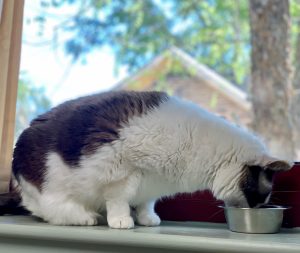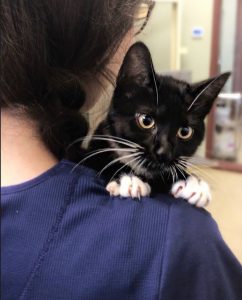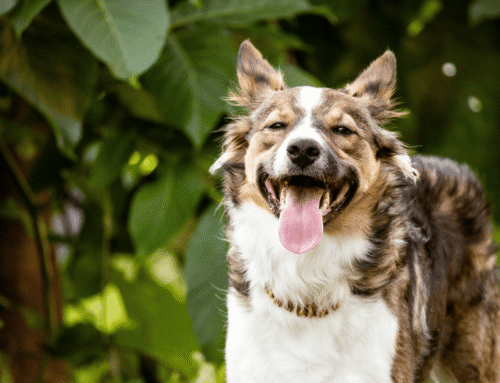Happy Earth Day! Ok, so I know it was actually on Monday, but let’s talk about it some more! It is all over the news….climate change, living green, and carbon footprint, err pawprints, in this case! It is estimated that dogs and cats contribute a quarter of all the agricultural greenhouse gases (approx. 64 million tons). Let’s focus on some immediate ways you and your pet can make a pawsitive impact on this data.
Pet food
Though it’s not a source we think about, there are two components involved. Any veterinarian will tell you that pet food production accounts for the largest single source of pets’ carbon pawprints. However, high quality veterinarian approved pet food manufacturers that use sustainable resources, like Royal Canin, cut down on this by reducing the amount of feces (stool) eliminated by your pet. The more nutrients your pet can absorb and utilize per feeding, the less output your pet will create. This reduces waste and all the clean up it entails.
Reusable and recyclable pet items
Speaking of feeding our pets… let’s think about the containers we use to feed them. Consider using stainless steel or glass dishes that can be washed and sanitized, versus plastics that are less environmentally friendly. Plastics can also become scratched, creating a space that allows bacterial growth to occur.
Also, consider donating gently used pet beds, collars, leashes, or towels. We gladly accept these items and take them to Charleston Animal Society. This combines spring cleaning, helping the environment, AND giving to animals in need! The purrrfect trifecta of pet parenting!
Adoption and Spay/Neuter
Reducing animal overpopulation, by spaying and neutering pets, shrinks the carbon pawprint before it’s even created. By adopting a homeless dog or cat, you also reduce the approximately 1.5 million animals euthanized each year in the US alone. This single, caring act can impact our pet population dramatically and reduce the carbon footprint. This pet clinic supports several local adoption agencies and honor a free initial exam as a way of saying thank you for choosing this option!
 Cleaning up after your Pet
Cleaning up after your Pet
Let’s face it, they eat…they poop. It’s how we handle the waste that impacts our planet. Poop stations are a great way to contain their waste and protect the environment at the same time. Reusing plastic grocery bags as clean up bags works great, too! Even better, use biodegradable bags, if you have them! When dealing with cat litter/waste clean up, consider a Litter Genie. If you’re into the art of D.I.Y., make your own by lining an empty litter container with a plastic bag. Collect each day’s waste into the container and dispose, when full. This uses one bag versus daily bags. Lastly, let’s think about where your pet eliminates. When keeping your yard healthy for your pets, make sure you use an eco-friendly and pet-friendly yard service. All products sprayed on lawns have an impact. Let’s make it a small one.
From this short list alone, we can see there are so many small tasks we can do to protect our earthly resources. Let’s keep our pets “earth friendly” on Earth Day and every day! What are you doing to help out? Share with us on our Facebook page, or tag us on Instagram!




 Cleaning up after your Pet
Cleaning up after your Pet




